2022 April 3
Val George writes: This moth was on the wall of my Oak Bay house yesterday, April 2. It looks like the Venusia obsoleta/pearsalli you posted on the site April 1.
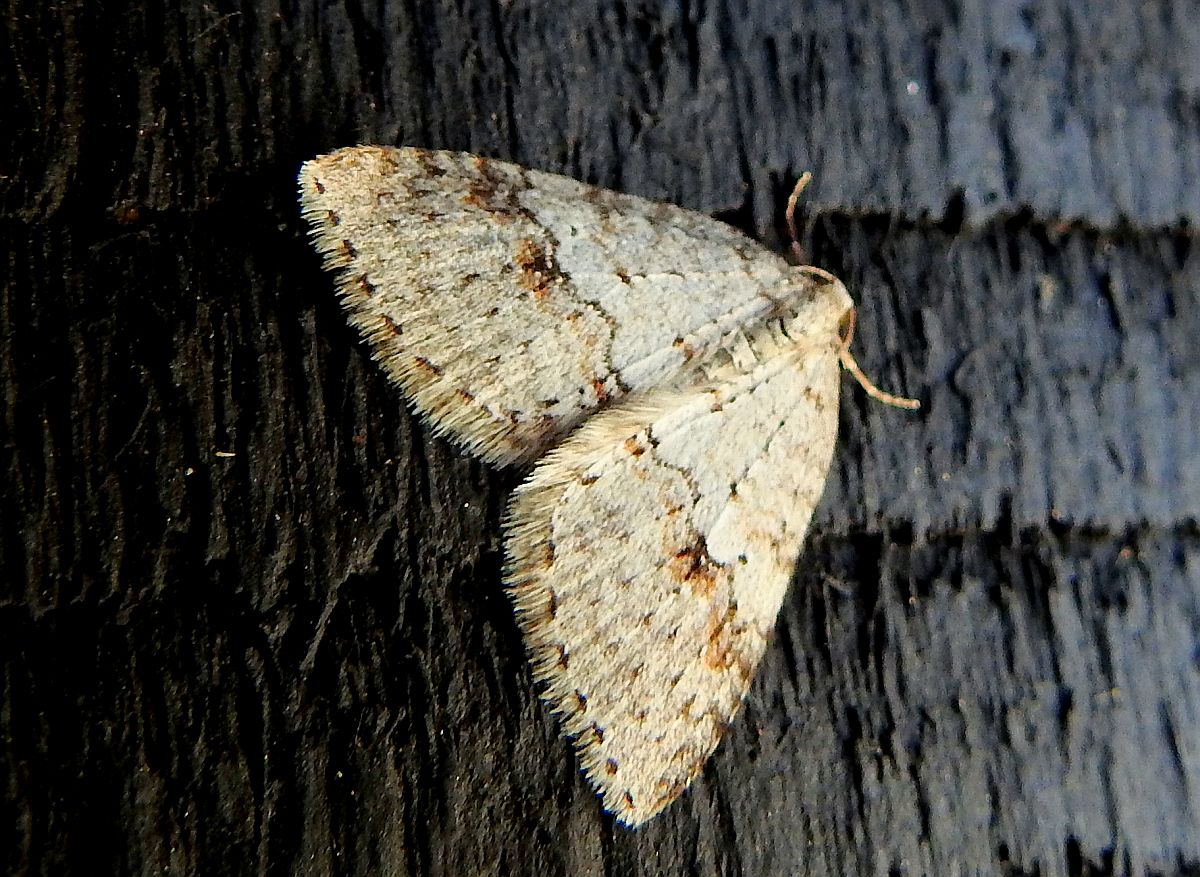
Venusia obsoleta/pearsalli (Lep.: Geometridae) Val George
2022 April 3
Val George writes: This moth was on the wall of my Oak Bay house yesterday, April 2. It looks like the Venusia obsoleta/pearsalli you posted on the site April 1.

Venusia obsoleta/pearsalli (Lep.: Geometridae) Val George
2022 April 1 morning
Jochen Möhr sends photographs of two moths from his Metchosin home, March 31.
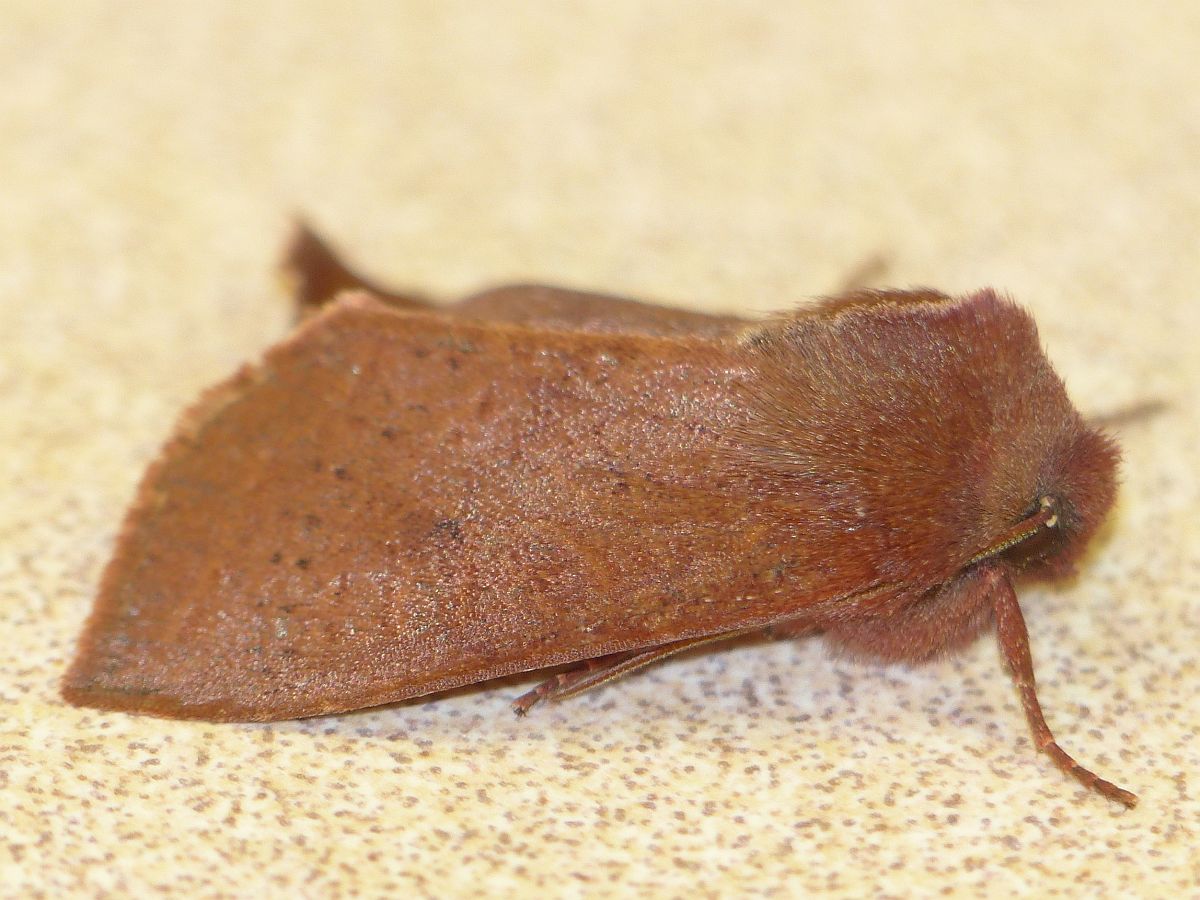
Orthosia transparens (Lep.: Noctuidae) Jochen Möhr
Jeremy Tatum writes: The larval foodplant is Gaultheria shallon.
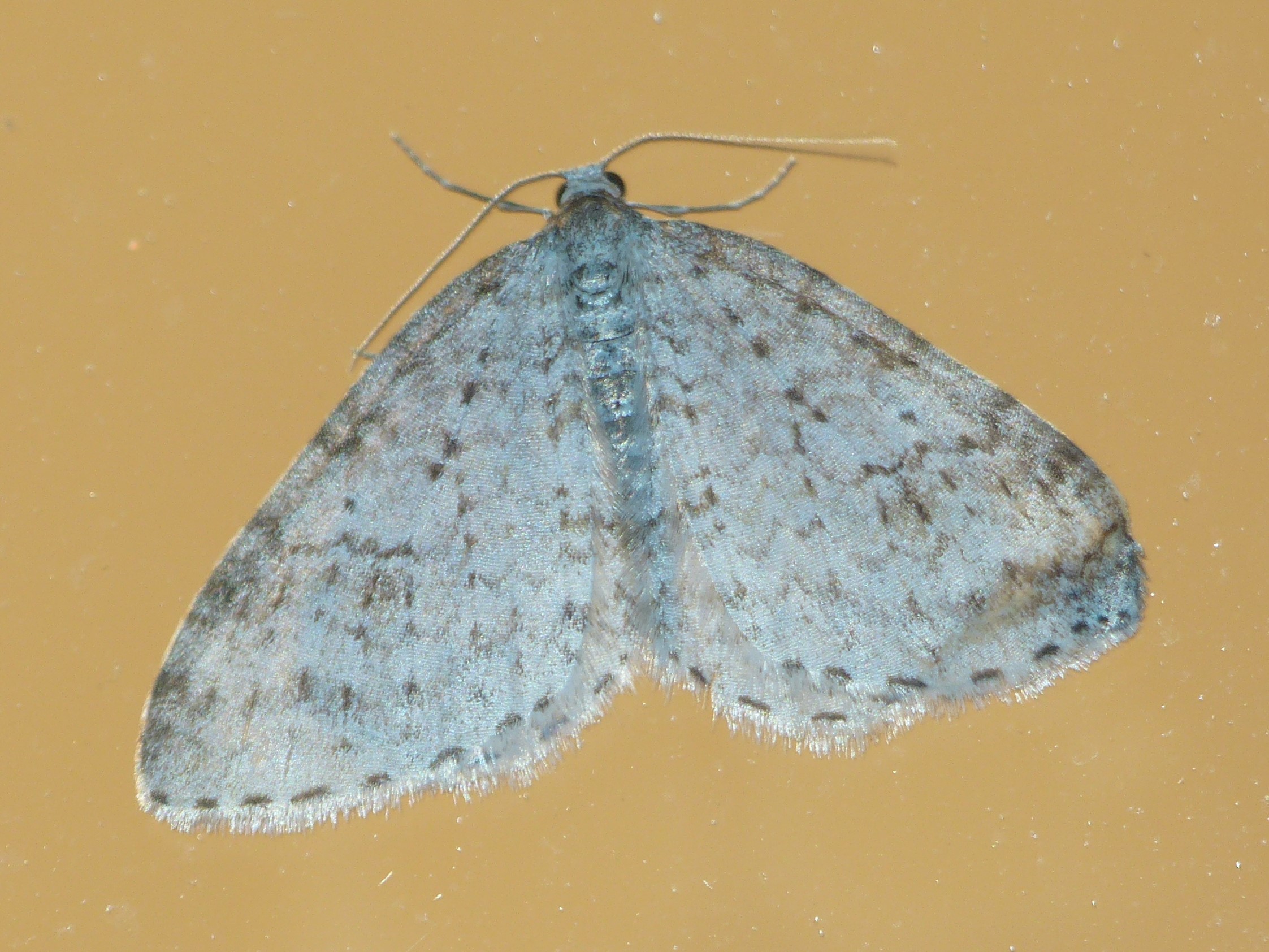
Venusia obsoleta/pearsalli (Lep.: Geometridae) Jochen Möhr
Jeremy Tatum writes: I don’t know a reliable way of distinguishing between these two species.
Jeremy continues: Here is a caterpillar of Paraseptis adnixa from near Blenkinsop Lake. This caterpillar sensibly appears early in the year – thus avoiding the attentions of tachinid flies. Its foodplant is Oemleria cerasiformis – about the only shrub in leaf in early March. Early images of this species on this site are listed as Aseptis adnixa.
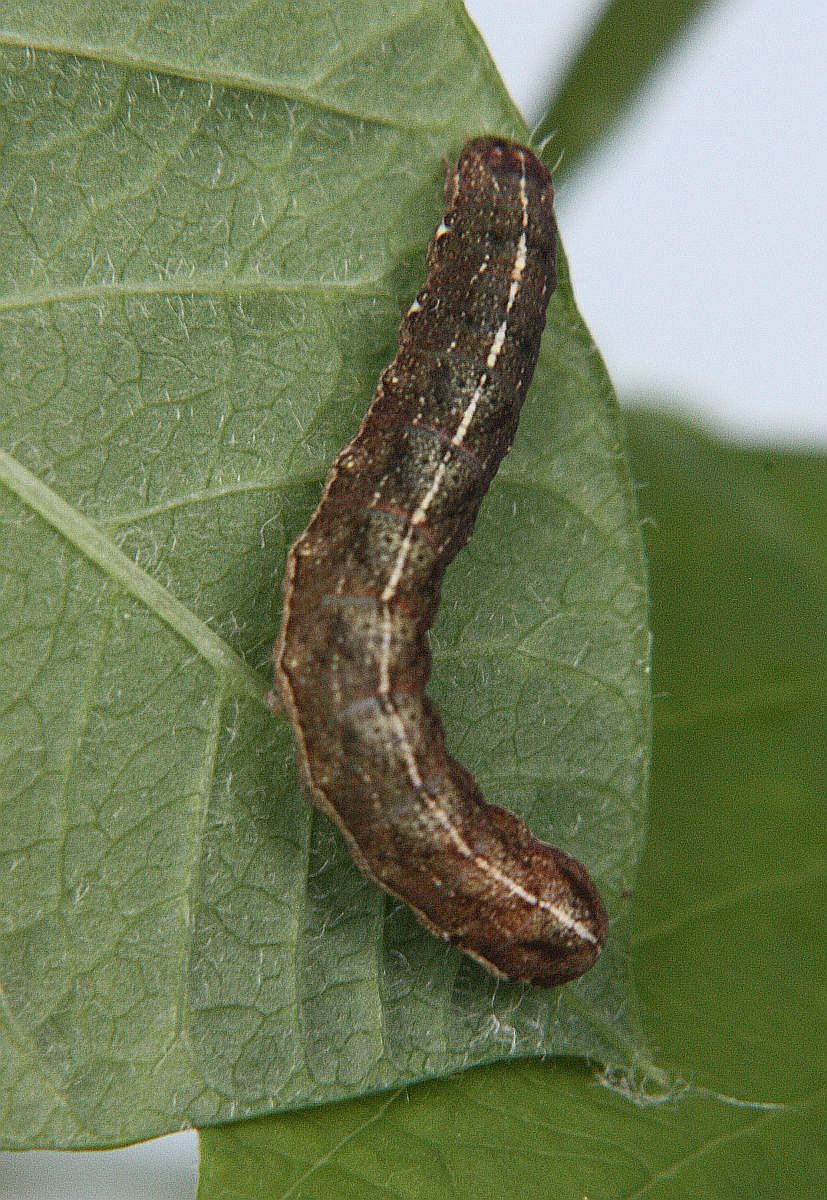
Paraseptis adnixa (Lep.: Noctuidae) Jeremy Tatum
The spectacular hawk moth caterpillar below is fully eight inches long. If it is gently squeezed it emits an alarming squeak. April 1 is an early date to find a hawk moth caterpillar this size.

Fullius aprile (Lep.: Sphingidae) Jeremy Tatum
2022 March 31
Rosemary Jorna photographed some bees from a rock in her Kemp Lake garden on March 29. Lincoln Best writes:
They are males and females of Andrena (Trachandrena). I cannot determine the species from the photos and I cannot tell if they represent one or two different species. There are several Trachandrena on the Island and some are difficult to distinguish without a microscope. Beautiful images,
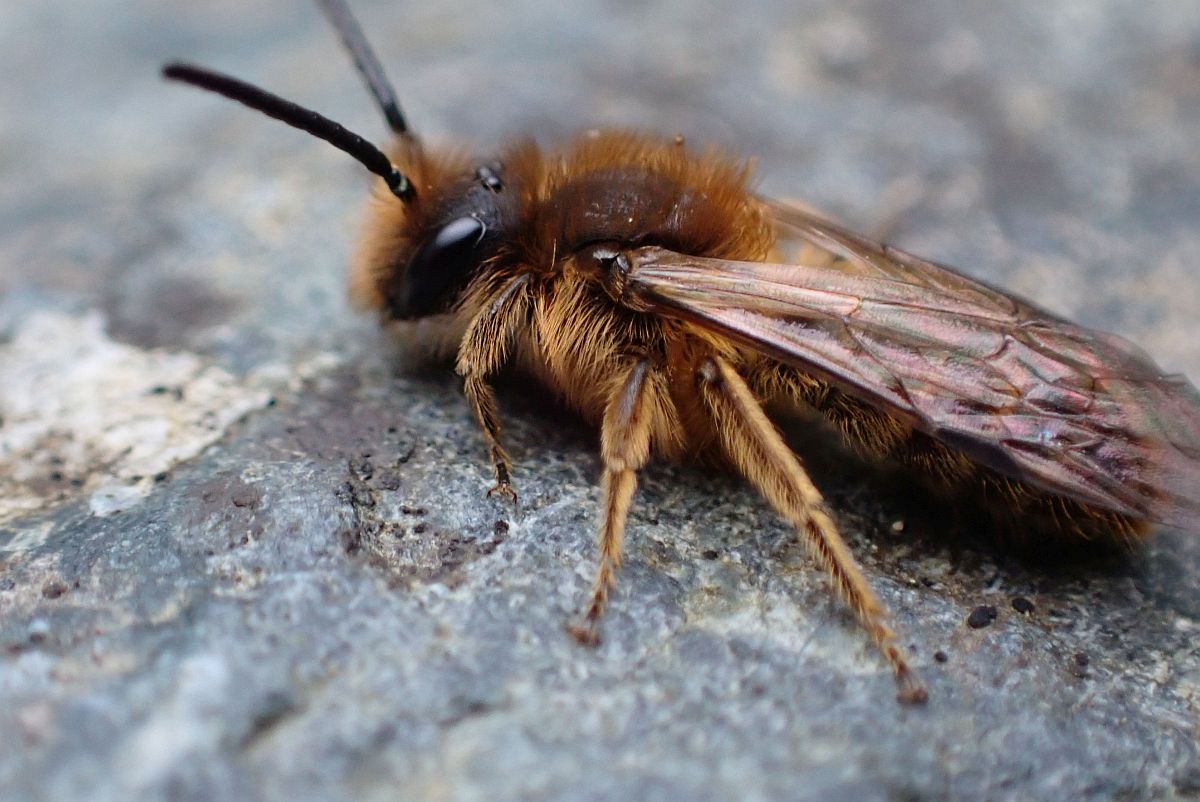
Andrena (Trachandrena) sp. (Hym.: Andrenidae) Rosemary Jorna
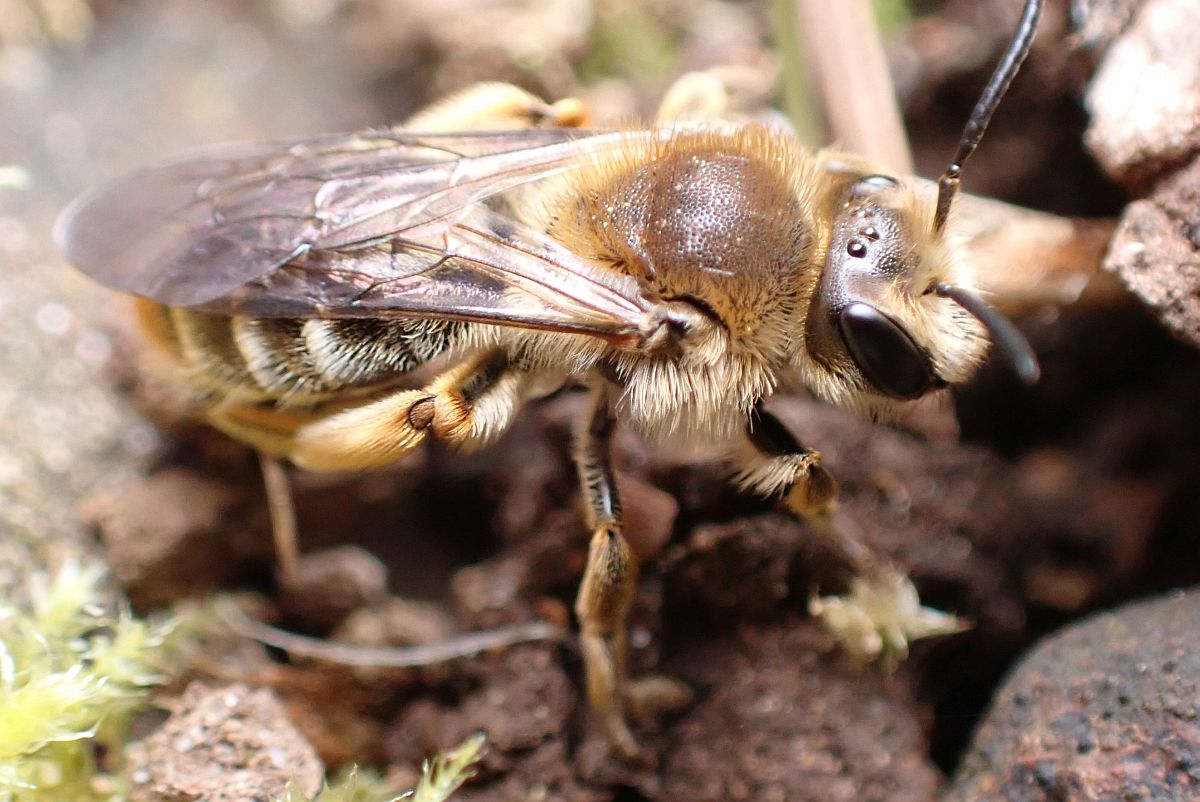
Andrena (Trachandrena) sp. (Hym.: Andrenidae) Rosemary Jorna
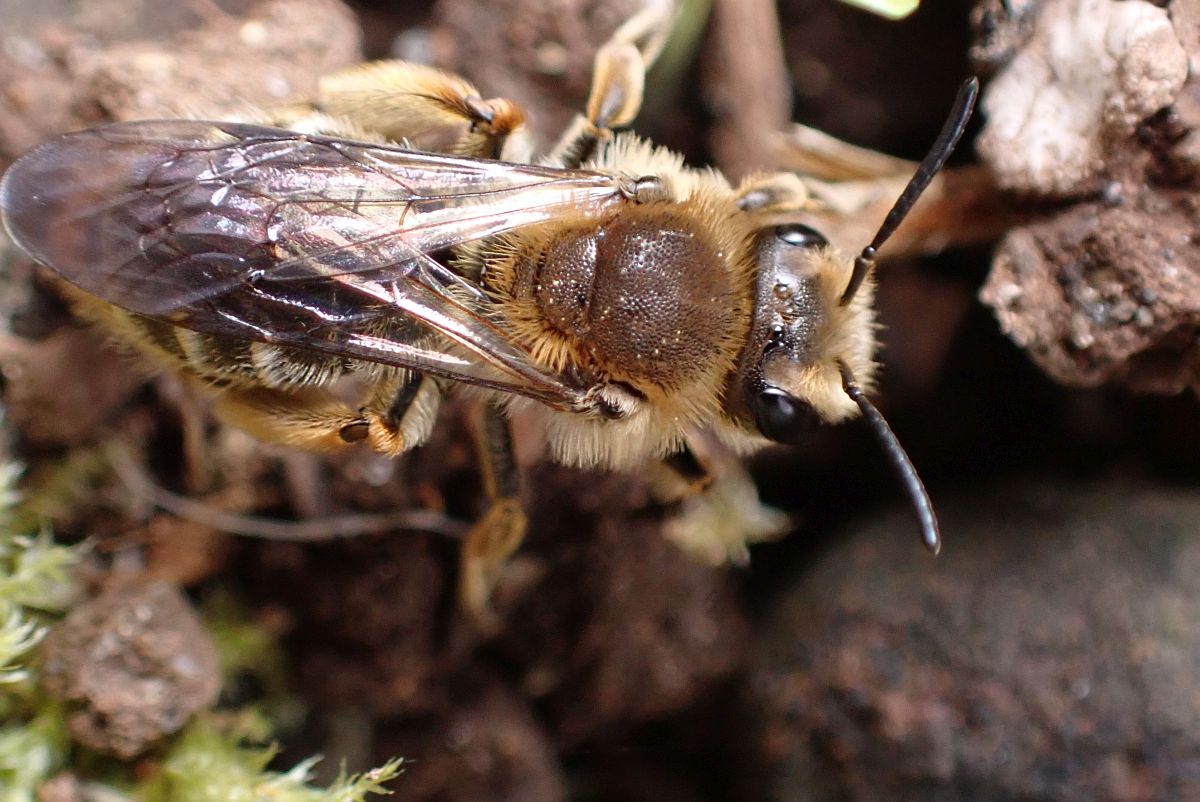
Andrena (Trachandrena) sp. (Hym.: Andrenidae) Rosemary Jorna
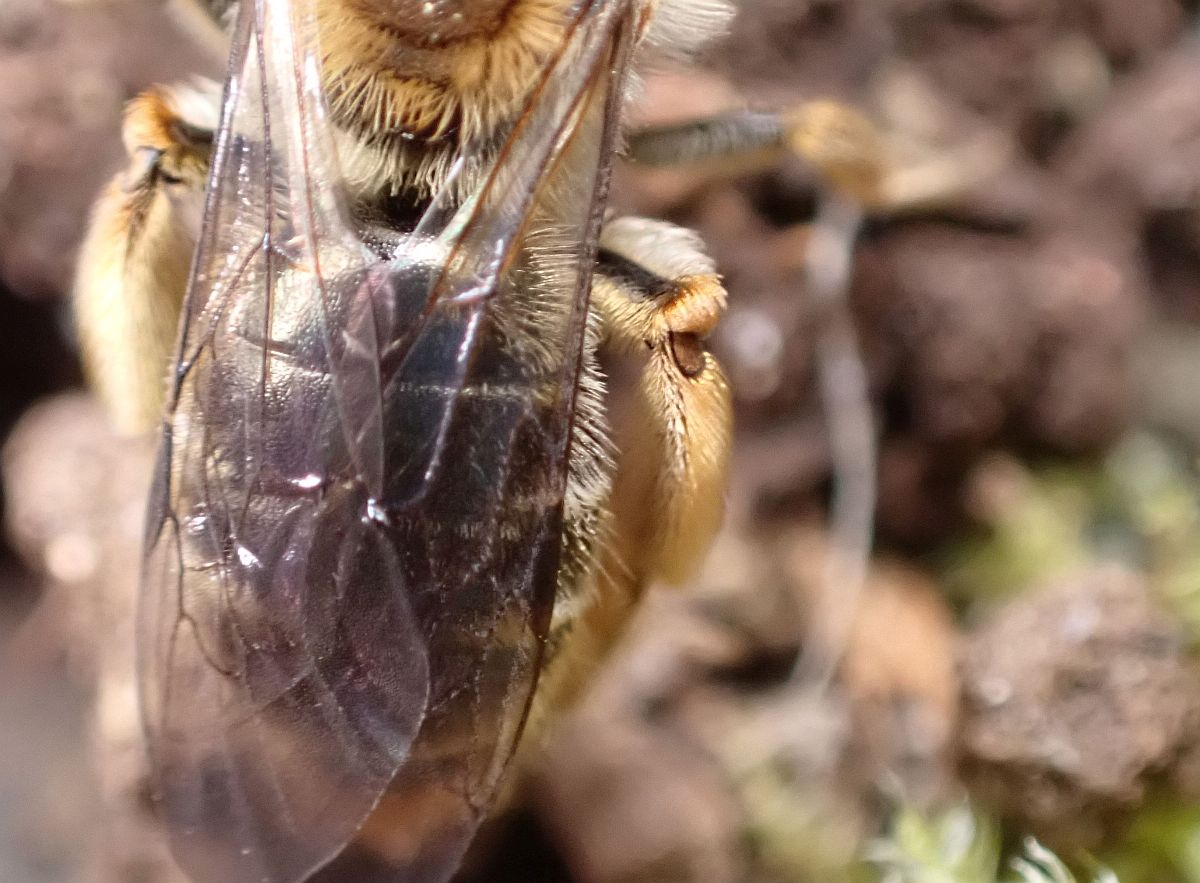
Andrena (Trachandrena) sp. (Hym.: Andrenidae) Rosemary Jorna
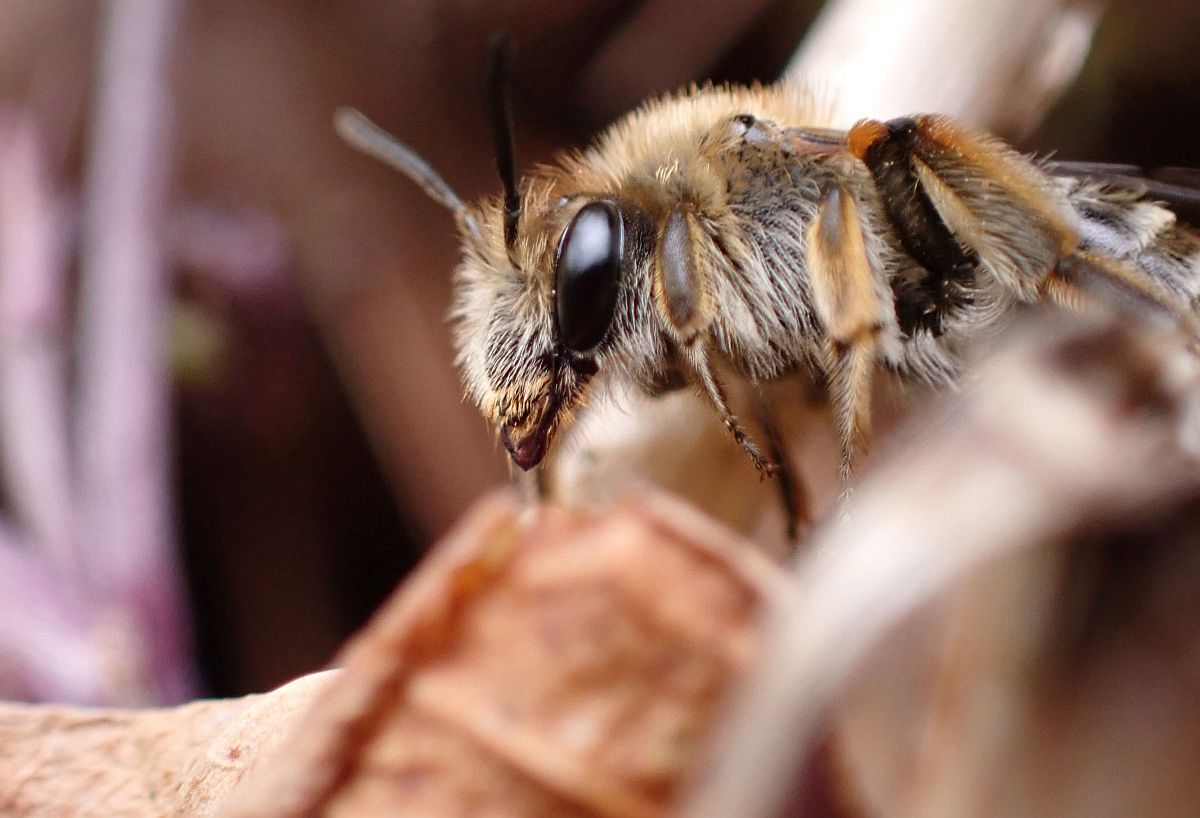
Andrena (Trachandrena) sp. (Hym.: Andrenidae) Rosemary Jorna
Jeremy Tatum writes: The Andrenidae nest in the ground and are known as mining bees. For those not familiar with the finer points of scientific nomenclature, Andrena is the genus, beginning with a capital letter, and set in italics. When you see a name in parentheses following the genus name, also beginning with a capital letter, and set in italics, in this case Trachandrena, this refers to the subgenus. Thus, Trachandrena is a subgenus within the genus Andrena.
2022 March 30
Val George writes: On the afternoon of March 29, there were three California Tortoiseshells at the summit of Mount Douglas. Considering that this species has also already been reported at Mount Tolmie, maybe it’s going to be a good year for them.
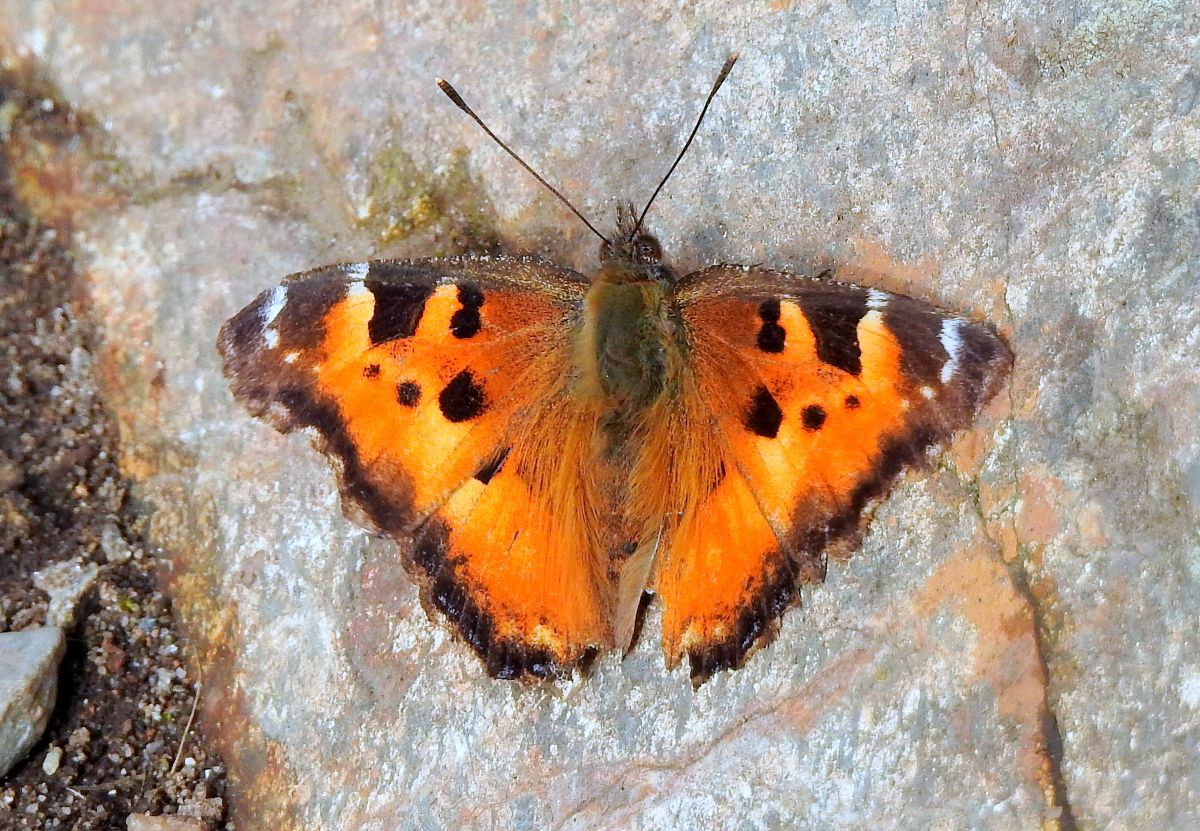
California Tortoiseshell Nymphalis californica (Lep.: Nymphalidae) Val George
Jeff Gaskin writes: This morning, March 30, around 10:30 a.m. a Satyr Comma was seen on the Lochside Trail just north of Blenkinsop Lake. It was seen about half way along the trail. He tells us that Kirsten Mills saw a Satyr Comma and a Mourning Cloak near Blenkinsop Lake today, and Gordon Hart saw a Satyr Comma at Island View Beach.
Rosemary Jorna sends a photograph of Mesoleuca gratulata from near Kemp Lake, March 29. The caterpillar of this moth feeds on Rubus sp.
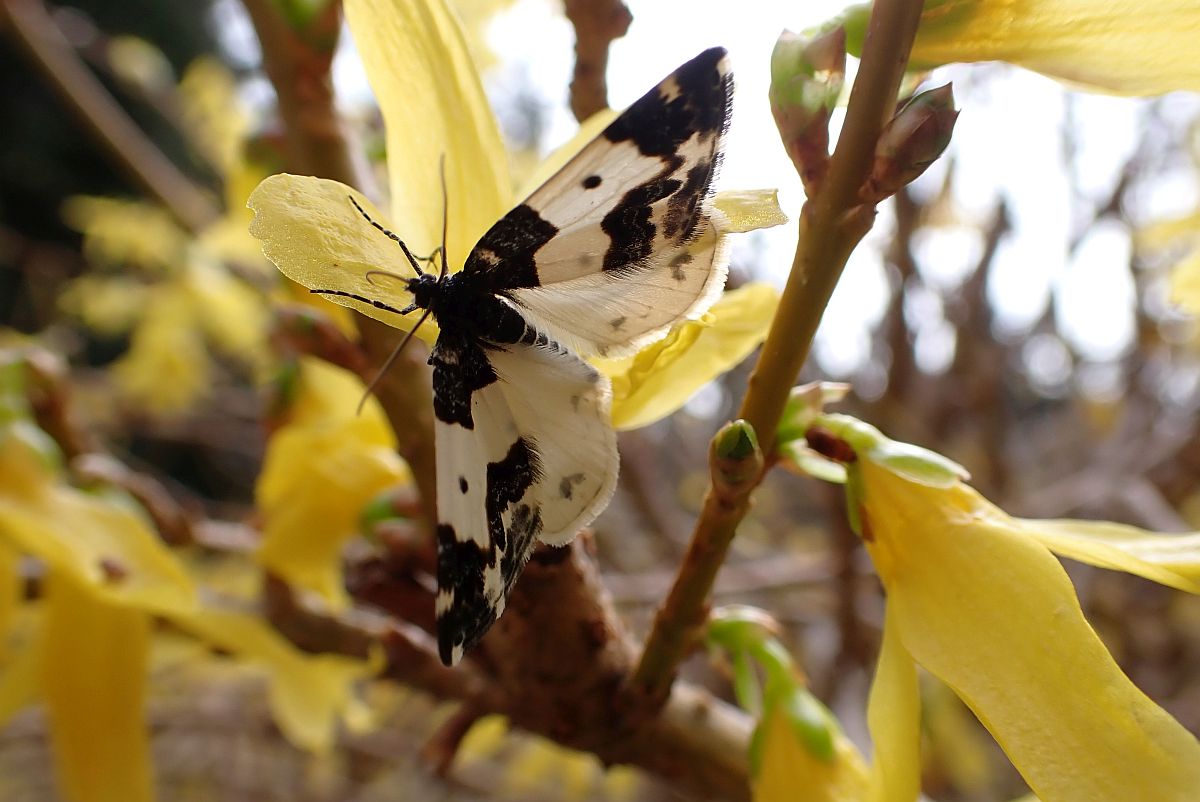
Mesoleuca gratulata (Lep.: Geometridae) Rosemary Jorna
She also sends a photograph of a click beetle, identified by Scott Gilmore as being of the large genus Dalopius. I was tempted, writes Jeremy Tatum, to write: “To view the image click here” – but unfortunately (or, you are probably thinking, fortunately) I didn’t know how to do this, so I just post the image instead.

Click beetle Dalopius sp. (Col.: Elateridae) Rosemary Jorna
Viewers may have seen the interesting article in Today’s Times-Colonist about the Taylor’s Checkerspots on Hornby Island – and some may wonder what Taylor’s Checkerspot is. It is Euphydryas editha taylori, the Vancouver Island race (subspecies) of Edith’s Checkerspot. Generally we do not give separate English names to subspecies of an organism. When birders want to refer to a race with an English name they write: Yellow-rumped (“Myrtle”) Warbler. I’d suggest that we should follow this convention, and refer to Edith’s (“Taylor’s”) Checkerspot.
There are additional complications here in that no one seems to know if there was actually a person called Edith after whom the butterfly was named, and also there is a modern trend not to name organisms after people, because some of the people were not nice. But that would take a further few pages to argue about.
When I first came to Victoria in the early 1960s, Edith’s (“Taylor’s”) Checkerspot was not rare around Victoria, and indeed I successfully reared a caterpillar feeding on Plantago and I still have a photograph of an adult butterfly. But it is a long time since they have been seen near here.
2022 March 29
The first Cabbage White to be reported to Invertebrate Alert this year comes from Jeff Gaskin, who saw one in the Martindale Valley, March 27. This is the first report this year of a butterfly that overwinters in the pupal state, rather than as an adult butterfly.